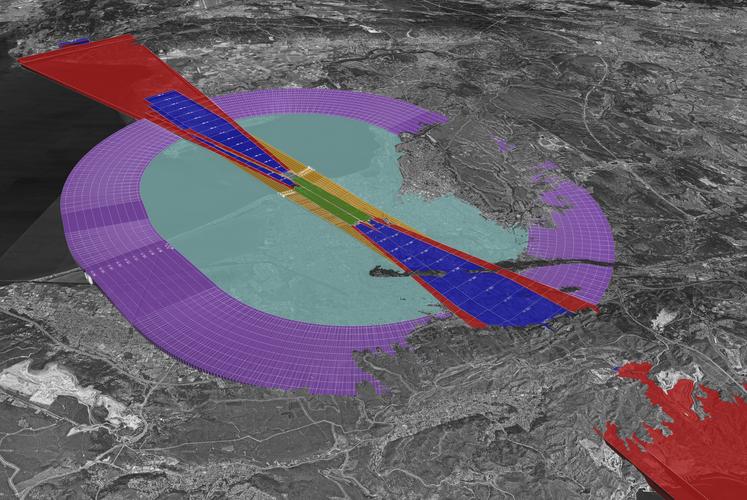Safe air operations require a permanent monitoring and assessment of possible infringements of applicable control surfaces defined by ICAO or national implementation thereof.
This process, known as "Aerodrome Safeguarding", is complex and requires consultation between Airport Operators, Air Navigation Service Providers, Civil Aviation Authorities, local communities and project developers.
This article first focuses on safeguarding of airspace and will be followed later this year by another edition on technical safeguarding of Communication, Navigation and Surveillance (CNS) equipment. It presents the following topics:
- An introduction to the principles and regulations related to safeguarding of airspace
- The utilisation of "Aeronautical Studies" to assess infringements relying on a safety-based approach, as illustrated by recent projects
- How to become trained and qualified personnel in this field, and airsight's course programme in this field
Safeguarding Principles and Regulations
Aerodrome Safeguarding covers a number of aspects, such as protecting the airspace around aerodrome to ensure no buildings or structure endanger aircraft, protecting the integrity of Communication, Navigation and Surveillance (CNS) equipment, aeronautical and obstacle lighting, wildlife management and more.
Safeguarding of Airspace
Safeguarding of Airspace aims at preventing collisions between aircraft and obstacles - such as new buildings or cranes. This is achieved by “Obstacle Limitation Surfaces (OLS)”, which extend around aerodromes. In addition, flight procedures need to be considered.
Obstacle Limitation Surfaces (OLS) are defined in international or national regulations such as ICAO Annex 14 and EASA CS-ADR-DSN. Essential areas and obstacle clearance criteria for instrument flight procedures are described in ICAO Document 8168 (PANS-OPS). Some States also provide criteria for additional aspects such as protection zones for visual flight procedures or windshear and turbulences.
The aerodrome safeguarding process shall facilitate the safe integration of new constructions around airports, i.e. facilitate urban development or the installation of wind turbines while ensuring that safety is not compromised.
Aeronautical Studies
Assessing infringements using a safety-based approach
In many cases infringements of the applicable OLS cannot be avoided: it then requires a detailed assessment, known as "Aeronautical Study", to assess if the proposed development has an impact on the safety or regularity of air operations.
Such study typically includes a description of the current and planned flight procedures and air operations, an impact assessment as well as an assessment of the risks. In case safety or regularity of air operations would be affected, mitigating measures are developed to ensure that safety is not compromised.
Projects and Case Studies
The assessment of obstacles around airports and their impact on flight operational safety is a core competency of airsight: We have conducted over <link internal-link internal link in current>100 projects in this field since 1999, and are internationally one of the most renowned experts in this field.
Do you have a project that you'd like to discuss with us?
Our services related to aerodrome safeguarding include:
- Obstacle Limitation Surfaces (OLS): Construct OLS and assess infringements
- Aeronautical Studies: Conduct an independent assessment to asses if safety or regularity of air operations is impacted by obstacles
- Maximum Building Height: Evaluate maximum constructible height for proposed buildings or cranes considering various aerodrome safeguarding aspects
- Safeguarding Maps: Developing maps, e.g. for obstacle management or local zoning, reflecting the need to protect the airspace around aerodromes
- Building construction approvals: Obtain authorisations and no-objection certificates for your construction projects by aviation authorities
- Liaison with planning and aviation authorities: Find and propose efficient solutions to conflicting interests between airspace users and project developers
- Obstacle Surveys: Collect via field or aerial survey, as well as using satellite, obstacle and terrain data around aerodromes
- Flight Procedure Design: Adapt flight operations to natural or new obstacles, while minimising impact for airspace users
<link mail internal link in current>Send us a message, we will review your request and get back to you!
